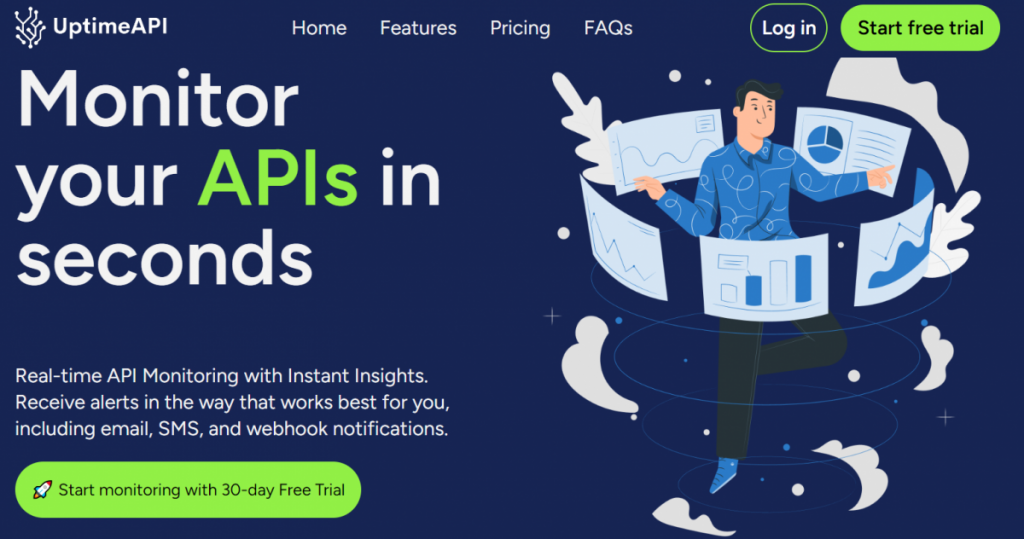In the realm of modern web development, REST APIs (Representational State Transfer Application Programming Interfaces) play a pivotal role in facilitating seamless communication between different software applications. The reliability and uptime of these APIs are of paramount importance for ensuring uninterrupted service and optimal user experiences. This article provides a comprehensive introduction to REST API uptime, shedding light on its significance and introducing UptimeAPI as a robust solution. We’ll also delve into the key aspects of API responses, exploring how UptimeAPI handles and communicates crucial information.
Understanding the Significance of REST API Uptime:

REST APIs serve as the backbone for countless web and mobile applications, allowing them to communicate and exchange data. The availability and reliability of these APIs directly impact the performance of applications and, consequently, user satisfaction. Downtime or disruptions in API services can lead to degraded user experiences, lost revenue, and damage to the reputation of businesses relying on these APIs.
Monitoring the uptime of REST APIs is vital for proactively identifying issues, ensuring continuous service availability, and maintaining a positive user experience. This is where UptimeAPI steps in as a comprehensive solution designed to empower developers and businesses in monitoring and optimizing their REST APIs.
Introducing UptimeAPI:
UptimeAPI is a specialized tool crafted to provide real-time monitoring for REST APIs. It offers a suite of features tailored to ensure the continuous availability and performance of RESTful services. Let’s explore some key features that make UptimeAPI an essential companion for developers and businesses relying on REST APIs:
- Real-Time Monitoring:
- UptimeAPI provides real-time monitoring capabilities, enabling users to receive instant alerts when there are deviations from expected API performance. This proactive approach allows for swift action to minimize downtime and ensure uninterrupted service.
- Performance Metrics:
- The platform offers detailed performance metrics, including response times, error rates, and overall uptime percentage. Developers and administrators gain valuable insights into the health of their REST APIs, allowing for data-driven decisions and optimizations.
- Historical Data Analysis:
- UptimeAPI stores historical data, facilitating trend analysis over time. This feature is crucial for identifying patterns, anticipating issues, and making informed decisions for improving the overall reliability of REST APIs.
- Customizable Alerts:
- Users can set up customizable alerts based on specific performance thresholds. Whether it’s a sudden spike in response times or an increase in error rates, UptimeAPI ensures that relevant stakeholders are promptly notified, enabling quick response and issue resolution.
API Responses: Decoding the Language of UptimeAPI

When monitoring REST API uptime, understanding the language of API responses is key. UptimeAPI communicates vital information through HTTP status codes and additional metrics. Let’s delve into the components of an API response:
- HTTP Status Codes:
- 200 OK: The API request was successful.
- 404 Not Found: The requested resource was not found.
- 500 Internal Server Error: The API encountered an unexpected condition, indicating a potential issue that requires attention.
- Response Time:
- UptimeAPI measures the time it takes for a REST API to respond to a request. A sudden increase in response time may indicate performance issues that developers need to investigate and address.
- Error Rates:
- UptimeAPI tracks the percentage of API requests that result in errors. High error rates may signify issues with the API’s functionality or connectivity problems that need to be resolved.
- Uptime Percentage:
- This metric represents the percentage of time the REST API has been available and responsive. Aim for high uptime percentages to ensure continuous service availability for end-users.
Conclusion:
REST API uptime is a critical aspect of modern web development, and UptimeAPI stands as a powerful tool for ensuring the reliability and performance of these crucial services. This complete introduction has highlighted the significance of monitoring REST API uptime, introduced UptimeAPI’s key features, and provided insights into interpreting API responses. As developers and businesses strive for seamless digital experiences, UptimeAPI emerges as an indispensable ally in maintaining the optimal functionality of REST APIs and delivering top-notch user experiences.
Read More: Company profile APIUsage Cases

